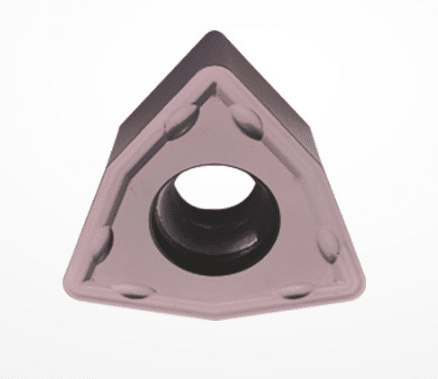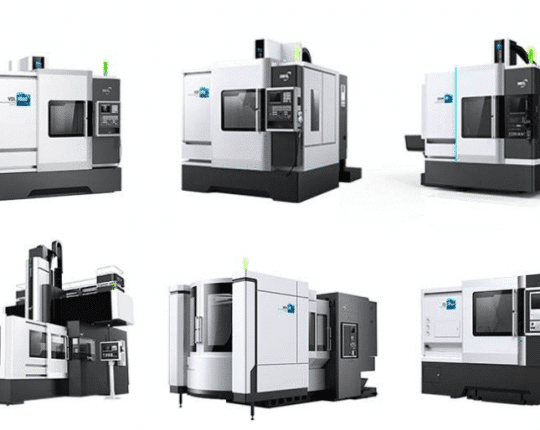In the daily production, the reasonable choice of turning tool material and shape directly affects the labor productivity and the processing quality of parts. In the process of cutting, the tool must bear a lot of cutting force and impact force, and work at a high temperature, and continuously bear strong friction and extrusion, which is easy to cause wear and damage of turning tool. If the tool materials are not selected reasonably, the parts will not meet the use requirements, resulting in material waste, premature damage of machine tools and equipment, resulting in great economic losses. Therefore, different tool materials should be selected according to different machining materials. Reasonable selection of cutting tool materials can not only improve the labor efficiency and ensure the processing quality, but also save costs and reduce the labor intensity of workers.
Reasonable choices of tool materials
Tool materials mainly include carbon tool steel, alloy tool steel, high-speed steel, cemented carbide, ceramics and superhard tool materials.

Carbon tool steel and alloy tool steel are mainly used for manufacturing tools, dies and measuring tools.
High speed steel is a tool steel with more alloy elements such as tungsten (W), molybdenum (Mo), chromium (Cr) and vanadium (V). High speed steel tools are easy to manufacture, easy to grind, easy to get sharp edge through grinding, and have good toughness, which are often used in the occasions with large impact force. It is especially used to manufacture various complex forming tools and hole machining tools. High speed steel can be divided into tungsten and tungsten molybdenum. Tungsten high speed steel (W18Cr4V) is widely used at present, but it can not be used in high speed cutting because of its poor heat resistance. Tungsten molybdenum high speed steel (w6wo5cr4v2) is used to manufacture hot rolling tools, twist drills, etc.
Cemented carbide is a kind of powder metallurgy product, which is made of tungsten and titanium carbide powder and cobalt as binder, and then sintered at high temperature after high-pressure pressing. It is the most widely used turning tool material at present. According to the composition, there are three kinds of commonly used tungsten cobalt alloy (K type), tungsten titanium cobalt alloy (P type) and tungsten titanium tantalum cobalt alloy (M type). Tungsten cobalt cemented carbides are composed of tungsten carbide (WC) and cobalt (CO). They are mainly used for processing cast iron, brittle materials or occasions with high impact. Commonly used codes are K01, K10 and K20. Generally, K01 is used for finishing, K10 for semi finishing and K20 for rough machining. Tungsten titanium cobalt cemented carbide is composed of tungsten carbide, cobalt and titanium carbide. It is suitable for processing steel or other plastic materials with high toughness, but it is brittle, not impact resistant and not suitable for processing brittle materials. Common codes are P01, P10 and P30. Generally, P01 is used for finishing, P10 for semi finishing and P30 for rough machining. Tungsten, titanium, tantalum and cobalt are suitable for processing ferrous and non-ferrous metals with long or short chips. Commonly used codes are M10 and M20. M10 is used for finishing and M20 is used for rough machining. Ceramic cutting tools are mainly used for semi finishing and finishing of non-ferrous metals, cast iron and hardened steel. The superhard materials are cubic boron nitride and Diamond: cubic boron nitride is used for semi finishing and finishing of alloy, hardened steel and chilled cast iron. Diamond can precisely cut non-ferrous metals and alloys and wear-resistant materials with high hardness.
Selection of threading cutters

The selection of thread turning tool is widely used in all kinds of mechanical products, and the parts with thread and worm are widely used. The thread turning tools with different angles are selected according to different threads.
(1) there are two kinds of triangular thread turning tools: high speed steel and hard alloy. The high-speed steel thread turning tool has the advantages of convenient grinding, easy sharpening, good toughness, not easy to crack the tip of the tool, small surface roughness value of the thread, but poor heat resistance, which is only suitable for low-speed thread turning. Hard alloy thread turning tool has high hardness, good wear resistance, high temperature resistance, good thermal stability, but poor impact resistance. Therefore, carbide thread turning tool is suitable for high speed cutting. In high-speed cutting, the actual profile will be enlarged, so the sharp angle of the tool should be reduced by about 30 ‘, and the roughness of the front and back face of the turning tool must be very small.
(2) when turning trapezoidal thread, the radial cutting force is large. In order to reduce the cutting force, it can be divided into rough turning and finish turning. During rough turning, in order to facilitate left and right cutting and reserve the finishing allowance, the width of the cutter head shall be smaller than the width of the bottom of the alveolar, the back angle of the diameter shall be about 8 °, the front angle shall be 10 ° – 15 °, the back angle of both sides shall be (3 ° – 5 °) ± ψ (thread rising angle), and the tooth angle shall be 30 ° 0 – 30 ′. The front angle of high-speed steel finishing tool diameter is 0, and the angle between the cutting edges on both sides is equal to the tooth angle. In order to ensure the smooth cutting on both sides of the cutting edge, the cutting edge should be grinded with a large rake angle (10 ° – 16 °). However, it must be noted that the cutting edge at the front end of the turning tool cannot participate in the cutting. The high-speed steel ladder thread turning tool can process the thread with high precision and small surface roughness, but the production efficiency is low. In order to improve production efficiency, carbide turning tools can be used for high-speed cutting when turning general precision threads.

(3) there are two kinds of commonly used worm: metric (20 °) and British (14.5 °). British worm is rarely used in China. Metric worm is mainly used. High speed steel turning tool is generally used for worm turning, and rough turning and fine turning are used for turning. During rough turning, it is required that the included angle between the cutting edges on the left and right sides is slightly less than twice the tooth shape angle, the width of the cutter head is less than the width of the tooth root slot, the left and right radial front angles of 10 ° ~ 15 ° are ground, the back angles of both sides are (3 ° ~ 5 °) ± ψ, and the cutter tip is properly rounded. When finishing, the included angle between the left and right edges is equal to twice of the tooth shape angle and should be symmetrical. The straightness of the cutting edge is better, the surface roughness value is small, and the chip rolling groove with large front angle (15 ° – 20 °) is ground. The above are only some basic ideas for the selection of turning tool materials and shapes. Due to the wide variety of cutting tools, the structural types and processing requirements of parts vary greatly. In practical operation, there is still a need for experience. Skilled personnel conduct scientific analysis based on the production conditions of schools and enterprises (production, planning, production compactness, scale, capital, etc.) and the conditions of processing parts and equipment, and select the cutting tools with reasonable performance and price, In this way, we can give full play to the potential of the equipment, ensure the processing quality, improve the processing efficiency, and improve the experience and efficiency of the enterprise.

